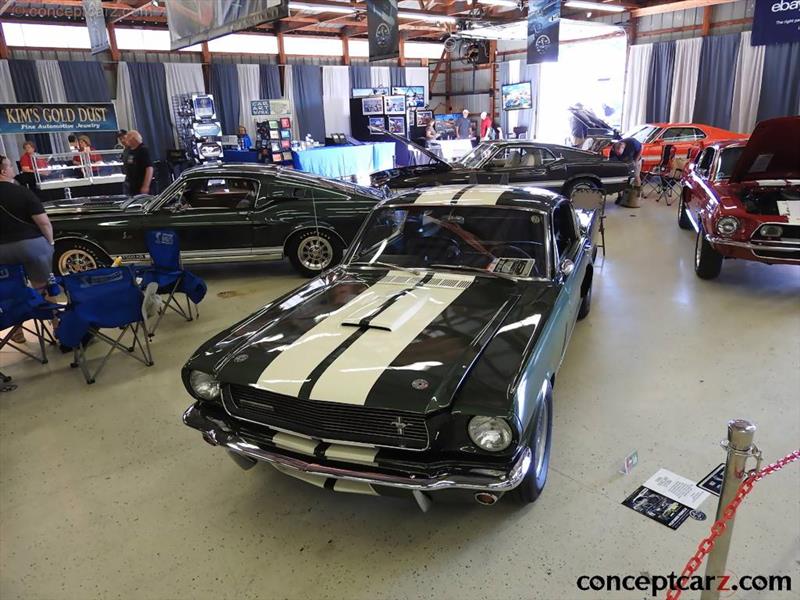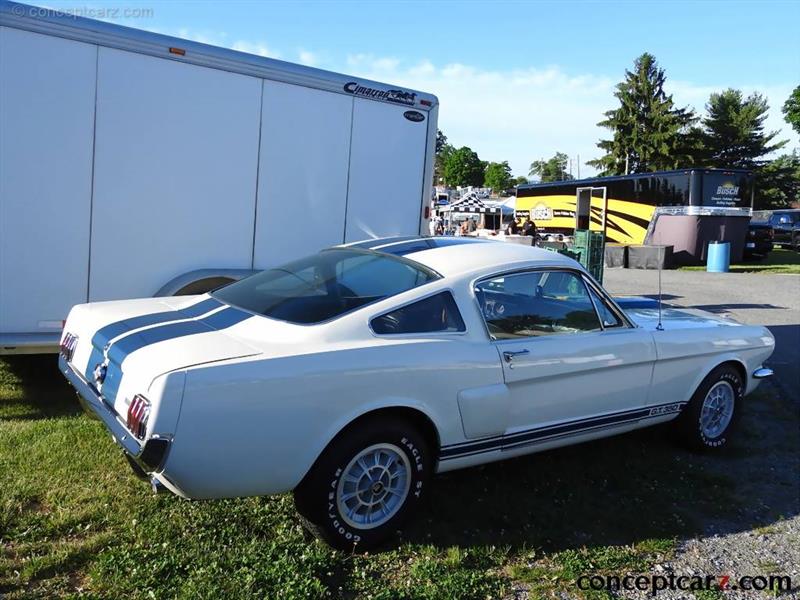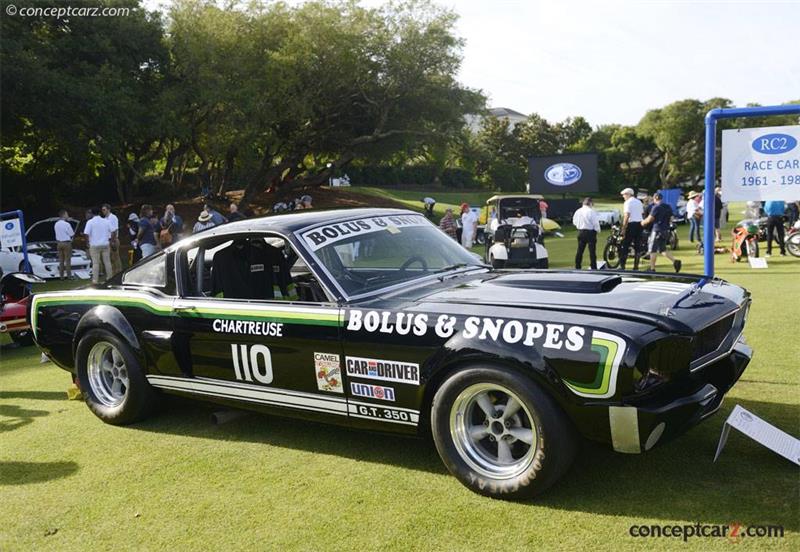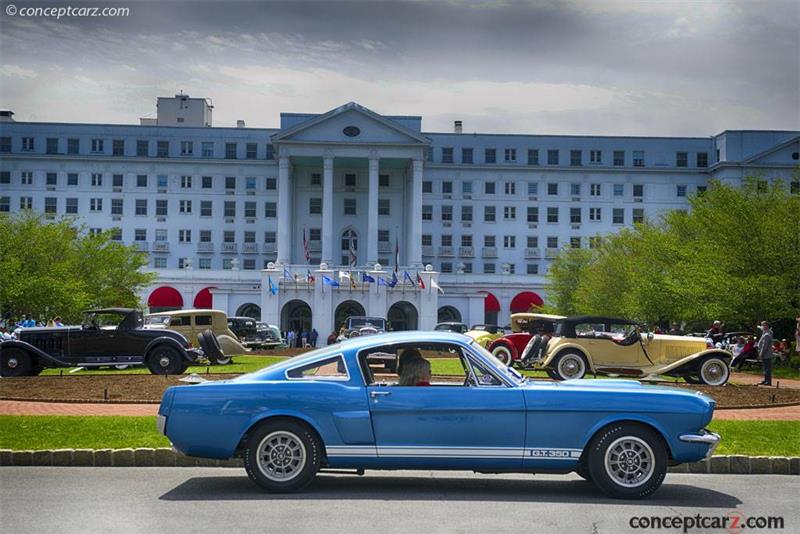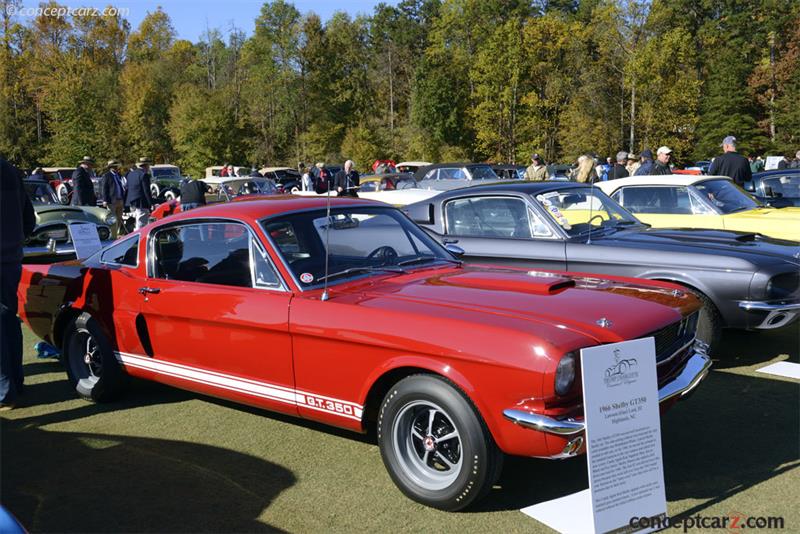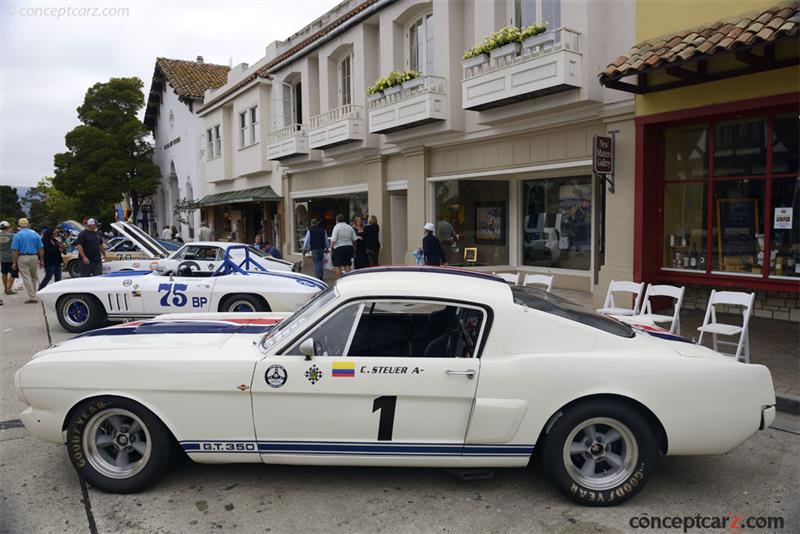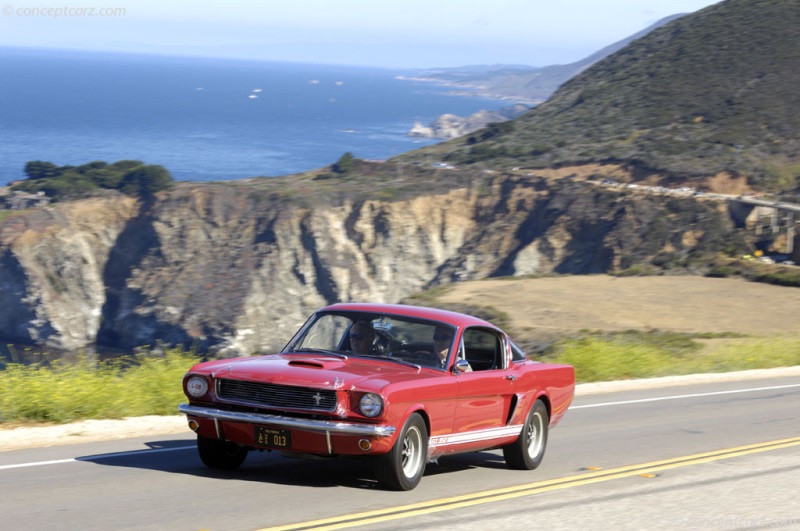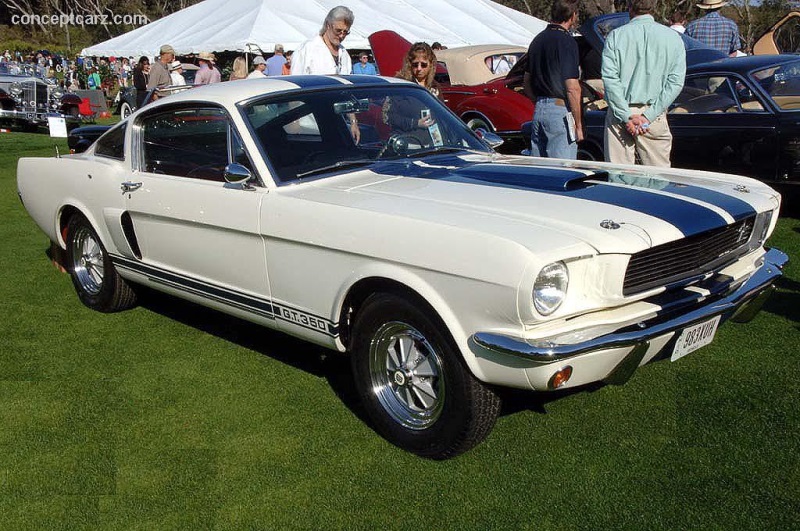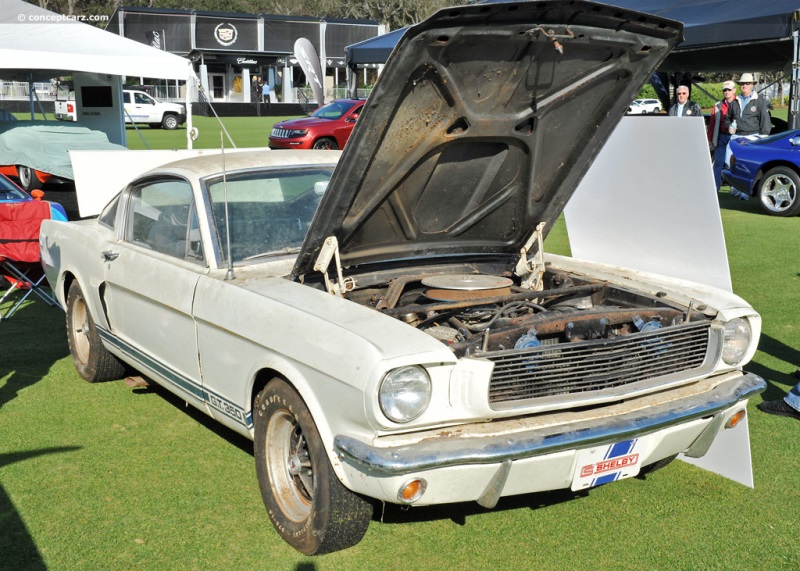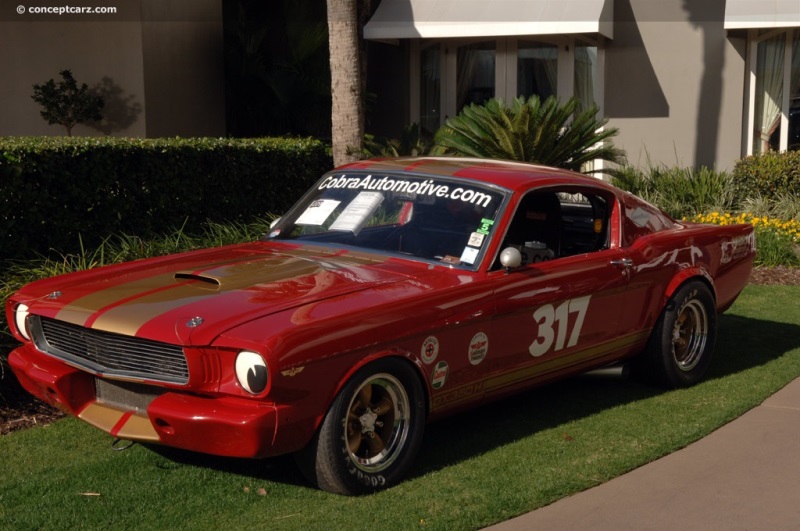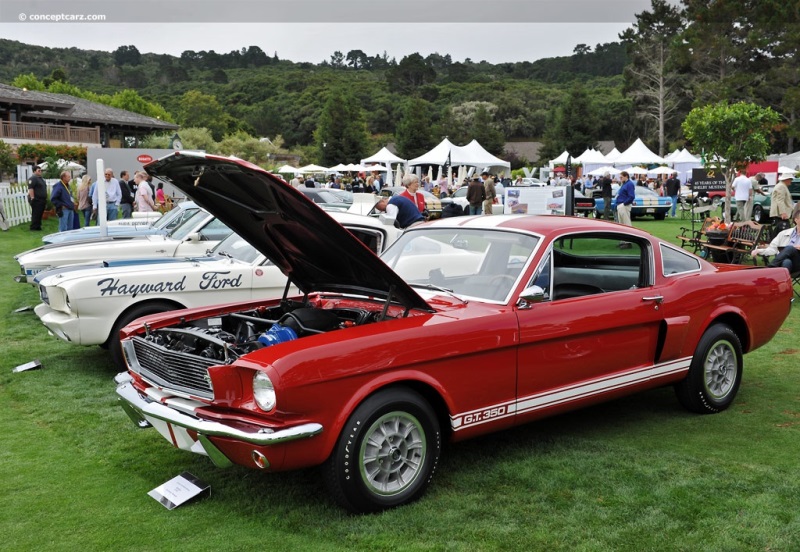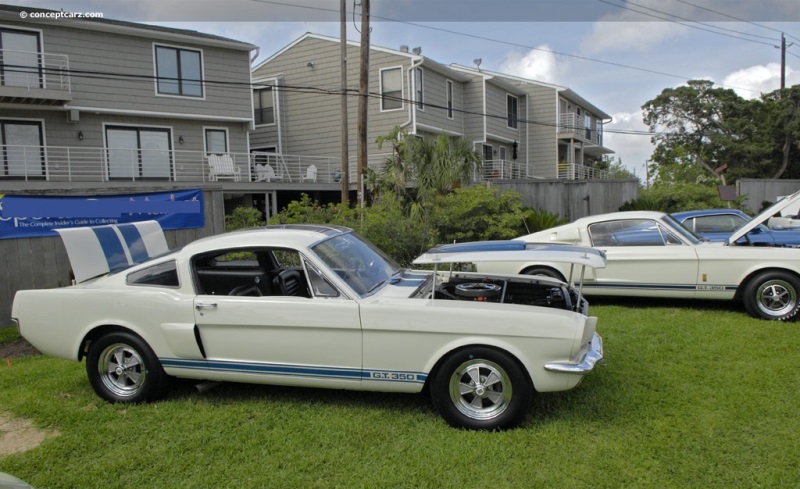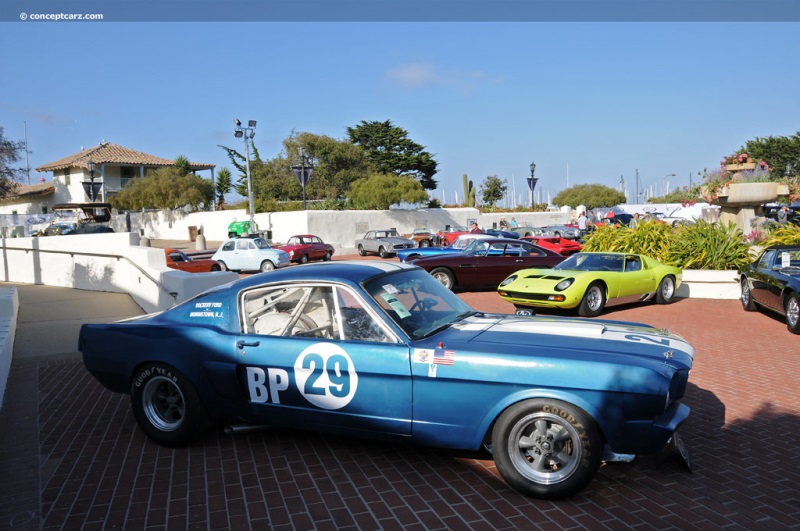The sales figures following the launch of the Ford Mustang in April of 1964 were nothing short of a phenomenon. Eighteen months into production, sales would reach nearly one million. Instead of waiting for the 'bubble to burst,' Lee Iacocca worked on the 'win on Sunday, sell on Monday' formula. Although a sales success, the early Mustangs were not the epitome of Total Performance, especially since this pony car was based on Ford's old economy car the Falcon. By this point in history, Carroll Shelby was known, trusted, and respected by Ford, thanks to his efforts in engineering the successful Cobra projects. In December 1964, the Sports Car Championship of America accepted the GT-350 into B-Production Racing. The Shelby GT-350 was unveiled by Shelby on January 27th of 1965 and during its racing career, the GT350 delivered three SCCA B-Production Championships in 1965-1967 for Ford.
CoupeJanuary 1965 was a busy month for Shelby America as Ford turned the GT-40 project over to him and two months later the company moved to the Los Angeles Airport facility for continued GT-350 production. The GT-350 began life as a White Mustang 2+2 delivered initially to Carroll Shelby's shop in Venice California from Ford's San Jose California Plant. They were powered by High-Performance 289 cubic-inch V8 engines backed by a four-speed manual gearbox. Most of Shelby's contributions were aimed at the chassis and handling of the Mustang, transforming it into a highly competitive sports car. The concept was a performance sports car from the start and not a conventional muscle car. Shelby modifications to the Hi-Po 289 V8 included a special high riser aluminum manifold, center pivot float Holley four-barrel carburetor, finned Cobra aluminum valve covers, extra capacity finned and baffled aluminum oil pan, and specially designed hand-built tubular tuned exhaust system featuring straight through glass-packed mufflers. These changes brought the standard 271 horsepower to 306 bhp. Additional mechanical improvements included fully synchronized Borg-Warner special Sebring close-ratio four-speed manual transmission with lightweight all-alloy case, nine-inch Detroit 'no-spin' differentials, computer-designed competition suspension geometry, Koni adjustable shock absorbers, one-inch diameter front anti-roll bar, fully stabilized, torque-controlled rear axle equipped with No-Spin limited-slip differential, Kelsey-Hayes front disc brakes with ventilated disc and special full competition pads, wide drum rear brakes with metallic linings, and trunk-mounted battery for optimum weight distribution.Exterior changes included the lightweight fiberglass hood with integrally designed functional air scoop, 350 competition side stripes, a clean-looking grille, and a tricolored running horse located on the driver's side of the grille.Interior changes included an all-black interior with bucket-type seats, Shelby-approved competition quick-release seatbelts, special instrument cluster with tachometer and oil pressure gauge in addition to the speedometer, fuel gauge and water temperature gauge, two-speed electric windshield wipers and washers, wood-rim racing-style steering wheel, 191 quick-ratio steering spare wheel cover, and heater.All Shelbys in 1965 were painted in Wimbledon White with a blue GT350 side stripe located below the door. The total price for these improvements was a reasonable $4,547. The street GT350 sales were strong, but they were essentially a thinly disguised race car. Buyers complained about the noise, rattles, and harshness. This led to the 1965 GT350 becoming more user-friendly due to a host of mechanical revisions that softened the edges and made the cars more tractable. 
Coupe
Chassis #: SFM6S169To ensure that Shelby American would have its 1966 GT350 models in dealerships when Ford released the new '66 Mustangs, Shelby ordered an additional 252 cars from Ford's San Jose plant at the very end of 1965 production. Most of the changes for 1966 were cosmetic as well as the addition of several new options including a choice of color. Most notably clear Plexiglas rear windows replaced the earlier vents, and functional side scoops were installed on the rear quarter panels for rear brake cooling. The front grille was modified with thin bars. The engine remained the same, a Shelby-prepared Ford V8 with a Holley four-barrel carburetor and a considerably quieter exhaust system. The Borg-Warner T10 four-speed manual transmission remained standard. The suspension was much closer to stock, greatly improving the ride and comfort. The optional GT instrument cluster was installed and, for the first time, Shelbys were available with an automatic transmission, fold-down rear seat, and even an optional factory supercharger. All told, 1,365 cars were built in addition to the 1,000 GT 350H Hertz 'Rent A Racers' and 13 specials and prototypes. Ford was a major shareholder of Hertz and had persuaded the rental car giant to purchase the fastbacks. Total 1966 production reached 2,378 examples. A small number of 1966 models were fitted from the factory with Paxton superchargers, a $670 option that brought horsepower to 440 bhp. 
Coupe
Chassis #: SFM6S1226Ford realized that racers were a small share of the market and they wanted the Shelby to appeal to a wider audience. 1966 was the start of the gradual 'toning down.' Friction developed and Shelby would eventually part ways with the project and the later Shelbys would be more of a trim package compared to the thoroughbreds they were in the beginning.
by Daniel Vaughan | Feb 2020
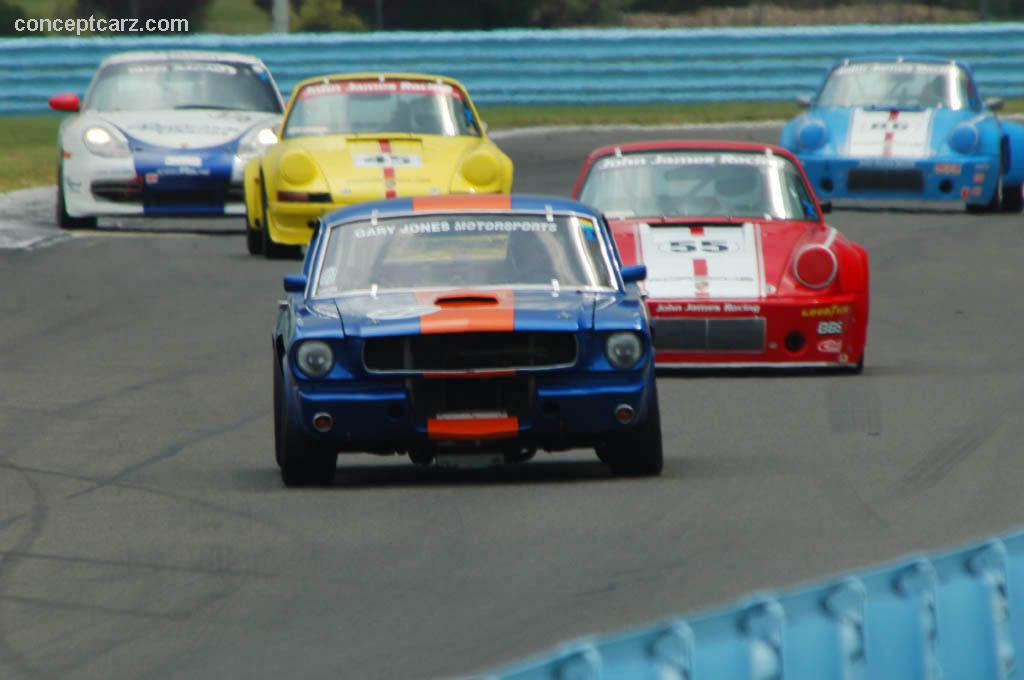
Coupe
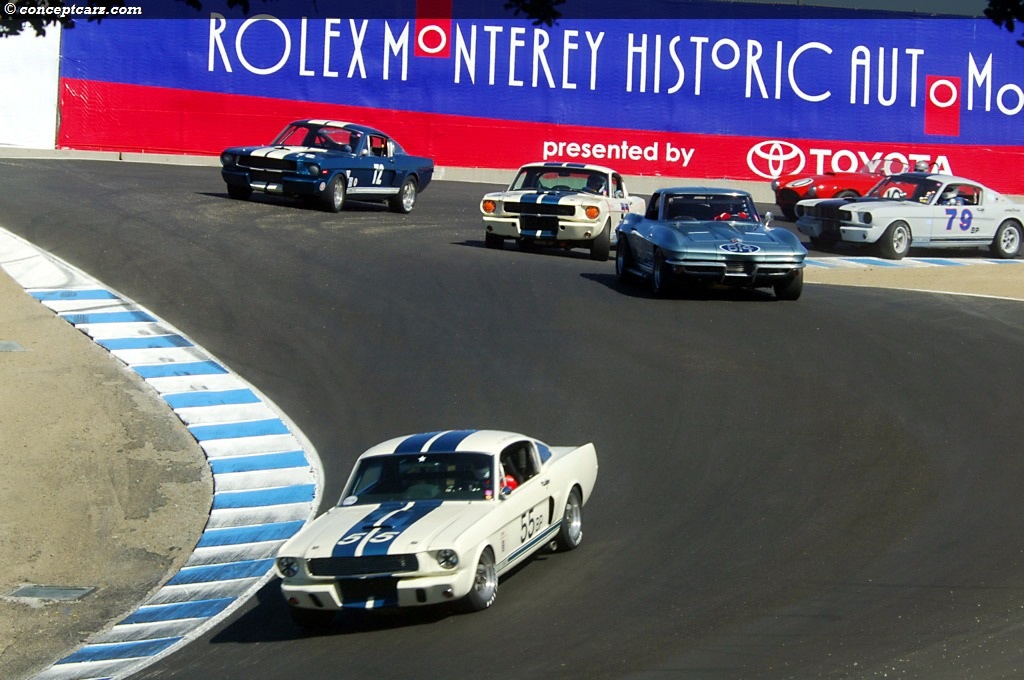
Coupe
Chassis #: SFM6S169
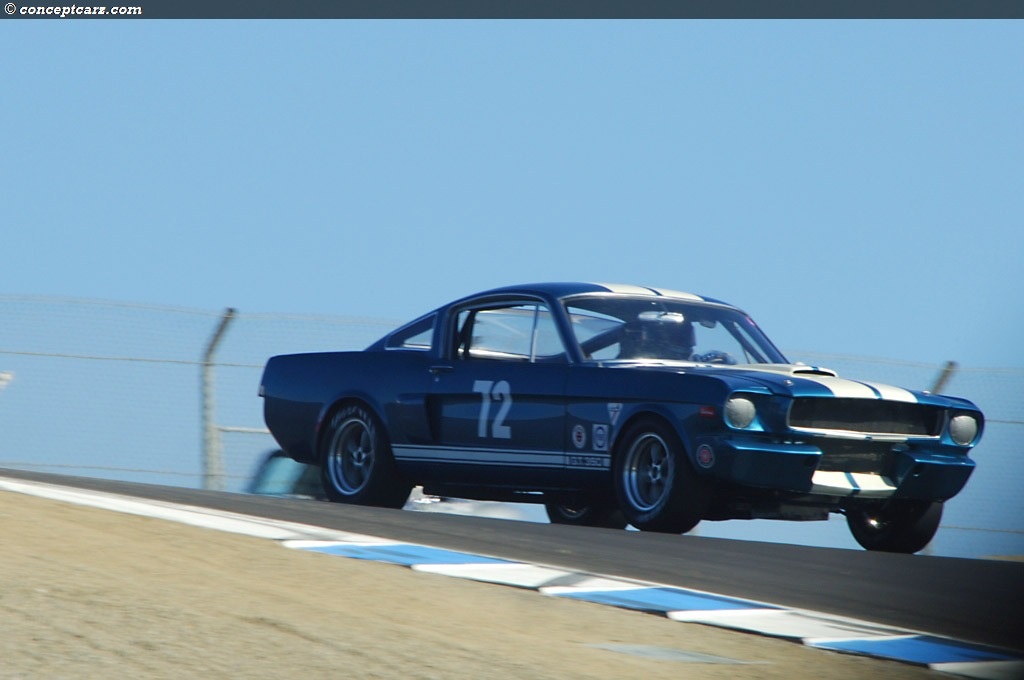
Coupe
Chassis #: SFM6S1226
by Daniel Vaughan | Feb 2020
Related Reading : Ford Mustang History
The Mustang was introduced at the 1965 New York Worlds Fair, Mustang Mania instantly swept the country, and a new automotive market segment was created - the 22 or better known as the ponycar. Though its mechanical underpinnings descended from the Falcon, the Mustang was completely different. It was a compact, tight, clean package weighing in at a modest 2,550 pounds - a departure from the ever-enlarging....
Continue Reading >>
Continue Reading >>
Related Reading : Ford Mustang History
The Ford Mustang first appeared in 1964 and was immediately popular for its style and its capabilities. The largest engine offering of the time was the 289 V-8 K-code small block engine which was sufficient but enthusiasts wanted and demanded more power. The base engine was a six-cylinder power plant. The body style configurations included coupe, convertible and fastback. In its first year of....
Continue Reading >>
Continue Reading >>
Related Reading : Ford Mustang History
A pillar of American automotive lore, the Mustang is the vehicle the brought sporting dash and styling at a price that almost everyone could afford. Always extraordinarily attractive, the Mustang has been capturing the hearts of drivers for nearly 40 years. Introducing a whole new breed of automobile, the pony car, Ford wasnt content to stand on the sidelines while others jumped ahead. Rather than....
Continue Reading >>
Continue Reading >>
Similar Vehicles
1966 Shelby Mustang GT350 Vehicle Profiles
Recent Vehicle Additions
Performance and Specification Comparison
Shelby Mustang GT350 Specification Comparison by Year
Year
Production
Wheelbase
Engine
Prices
Related Automotive News

Impeccably Presented and Highly Awarded 1966 Shelby GT350 Change-Over On Offer in Monterey, August 13-15
Scottsdale, Arizona (July 31st, 2015) – In 2015, Monterey Car Week and the Motorsports Reunion will celebrate the 50th anniversary of one of the most important and most recognizable road racing automobiles of all time Shelbys highly pivotal...

Barrett-Jackson to Offer a Spectacular Selection of Shelby Vehicles at the 2022 Scottsdale Auction, including a 1967 Shelby Cobra 427, the Lance Reventlow Cobra and a Premier Award-Winning 1965 GT350
Barrett-Jackson will celebrate 50 years of The Worlds Greatest Collector Car Auctions at its 2022 Scottsdale Auction, January 22-30, at WestWorld of Scottsdale. One of the most spectacular No Reserve dockets ever amassed at Barrett-Jackson, including...
RRDC VOTES IN 26 NEW MEMBERS FOR 2015
HILLIARD, Ohio (Oct. 23, 2015) - Twenty-six race-car drivers and motorsports professionals have been voted into the Road Racing Drivers Club in 2015. The group includes 11 Regular Members from the open-wheel and sports-car racing ranks, 10 Associate...

BILL WARNER IS RRDC'S 2014 BOB AKIN AWARD WINNER
DAYTONA BEACH, Fla. (Jan. 22, 2015) - Bill Warner, best known as the force behind the hugely successful Amelia Island Concours dElegance since 1996, received the 2014 Bob Akin Award from the Road Racing Drivers Club at a dinner prior to the running...

HURLEY HAYWOOD HONORED WITH RRDC'S 2014 PHIL HILL AWARD
DAYTONA BEACH, Fla. (Jan. 24, 2014) - Hurley Haywood, winner of more endurance classics than any other driver in racing history, was honored by the Road Racing Drivers Club with the 2014 Phil Hill Award. RRDC president Bobby Rahal presented Haywood...
RRDC VOTES IN 37 NEW MEMBERS FOR 2013
HILLIARD, Ohio (Nov. 7, 2013) - Thirty-seven race-car drivers and motorsports professionals have been voted into the Road Racing Drivers Club in 2013. The group includes 13 Regular Members from the open-wheel and sports-car racing ranks, 20 Associate...































